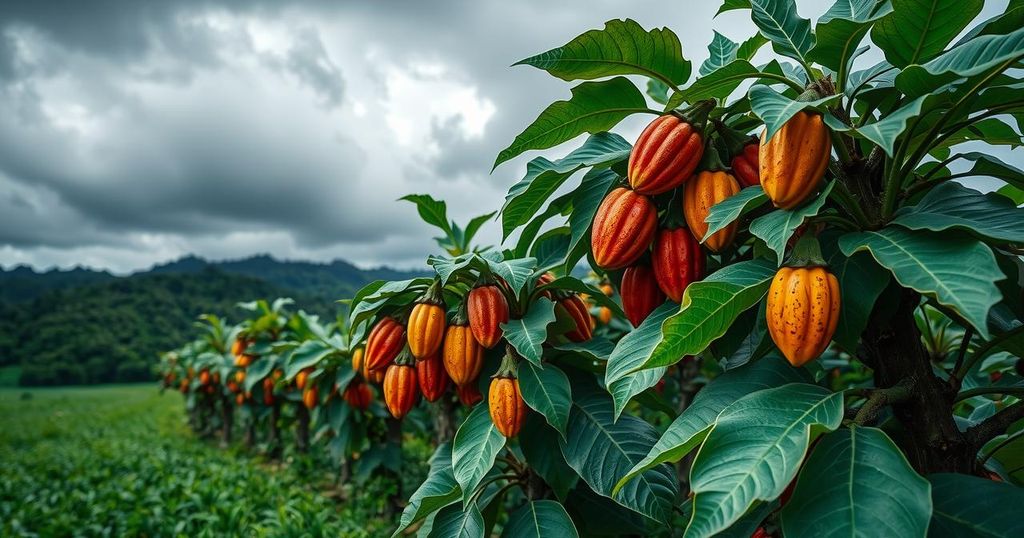Impacts of Climate Change on Global Chocolate Production

Climate change is adversely impacting cacao production in West Africa, causing elevated temperatures, diseases, and unusual rainfall, which hinder harvests and drive cocoa prices to record highs. A study reveals that climate change has lengthened the duration of excessive heat in cacao-growing regions, raising serious concerns about the crop’s future viability.
A recent study indicates that climate change is adversely impacting chocolate production in West Africa, particularly in the regions that provide approximately 70 percent of the global cacao supply. Researchers reported that increased temperatures, diseases, and erratic rainfall patterns have significantly hampered cacao harvests, contributing to soaring cocoa prices.
The report highlights that climate change, primarily due to the combustion of fossil fuels, is resulting in more frequent and intense heatwaves in principal cacao-producing countries, including Ivory Coast and Ghana. These regions are experiencing unprecedented rises in temperatures, which are detrimental to cacao tree cultivation.
Observational data collected from 44 cacao-producing regions and analyzed against models of a world without climate change revealed alarming trends. Specifically, the report states that climate change has insulated an additional three weeks of excessively high temperatures during the peak growing season in the last decade, intensifying the risk to crop yields.
Last year, deemed the hottest on record, researchers noted that over two-thirds of the analyzed areas experienced temperatures exceeding 32 degrees Celsius on at least 42 occasions. This relentless heat jeopardizes both the quantity and quality of cacao production, prompting concerns among scholars and agricultural experts.
Additional stressors, such as pests, varying rainfall patterns, and illegal activities, further complicate cacao farming and contribute to rising cocoa prices. A separate report by Christian Aid emphasized the precariousness of cacao farming in the face of climate extremes, underlining its significance as a livelihood for many impoverished communities.
Osai Ojigho from Christian Aid remarked, “Growing cocoa is a vital livelihood for many of the poorest people around the world and human-caused climate change is putting that under serious threat.” Such commentary emphasizes the urgent need to address the climate crisis to preserve this essential crop.
As cocoa harvests fail, cocoa prices have surged considerably. Recent market data indicates that cocoa prices in New York had escalated above $10,000 per tonne. This rise, while still below the peak of over $12,500 in December, marks a stark increase from previous decades where prices ranged between $2,000 and $3,000 per tonne.
In response to these increased costs, Swiss chocolate manufacturer Lindt & Spruengli announced plans to raise prices again this year. Narcisa Pricope from Mississippi State University expressed that cacao faces an “existential threat” due to persistent drought conditions affecting production regions, raising alarms about the future of chocolate.
Pricope’s recent research aligns with findings from the United Nations regarding global land drying trends, primarily attributed to greenhouse gas emissions. She stated, “Collective action against aridity isn’t just about saving chocolate – it’s about preserving the planet’s capacity to sustain life.”
In conclusion, climate change poses a significant threat to cocoa production, particularly in West Africa, leading to reduced harvests and increased prices. With rising temperatures exacerbating conditions for cacao trees, the livelihoods of numerous communities relying on cocoa farming are in jeopardy. Addressing these climate challenges is critical not only for the chocolate industry but also for global food security and ecosystems.
Original Source: www.sciencealert.com






